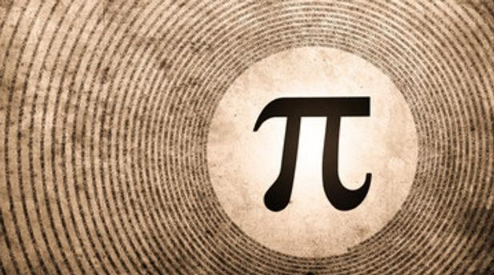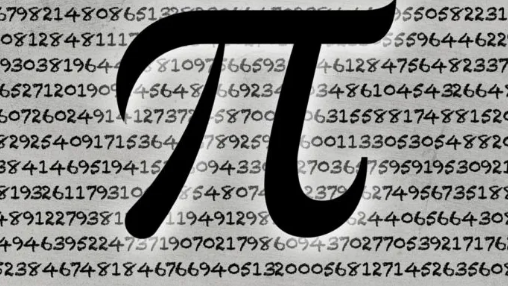March 14: 3/14 or 3/14 if we read it in English nomenclature. Saying ‘three fourteen’ quickly draws in our mind a number that reminds us of high school. It is very possible, that when listening to it we follow the litany: fifteen, ninety-two, sixty-five… as long as our memory reaches us to remember the figures of the unique number Pi. The US Congress in 2009 officially declared this day, March 14 , to be π Day. It was a huge success from the beginning, and the idea grew until in 2019, UNESCO declared it the International Day of Mathematics. Since then, each year more and more people have joined the celebration, with π as the symbol of those of us who love mathematics.

Pi Is Not Really A Number
Let’s start by clarifying something, Pi is the sixteenth letter of the Greek alphabet (π) and in mathematics we use it to represent something much more interesting than a number (which I’m not saying numbers aren’t). Thus, the first oddity of Pi is that it is not a number. But then, if it’s not a number, what is Pi?
Pi represents the ratio of the length of the circumference to its diameter . A proportion that has the particularity (here its second rarity) of being constant, of always having the same value regardless of how large or how small the circumference is.
In particular, in Euclidean geometry–the one we owe to Euclid (325 – 265 BCE) and which assures us of things like that a single straight line passes through two points–the constant value of Pi is so special (and now there are three) as for bee irrational
Not that he has lost his mind but that, despite resulting from dividing the perimeter by the diameter, I can never express it as the division of two integers. If the diameter of a wheel is an ‘exact’ value, without decimals, the space it will cover in one revolution will not be. But then how much will it be? We are approaching a key issue, the value of Pi… but let me continue with another of its rarities, the fourth already.
Pi is transcendental. Not that it is so important that it transcends (also) but that it is transcendent, without n. This mathematical property assures us that Pi will never be the solution of any polynomial. Polynomial? I’m sure you remember him from your math studies. Polynomials are equations in which the unknown appears raised to one or more natural numbers, for example x2 + x + 3 = 0.
Well, it doesn’t matter what exponents and numbers are used, there is no polynomial for which x is equal to Pi. It is also worth mentioning that this is a property that many numbers do not meet so, it is already proven that Pi is rare but the best is still missing. Now yes, let’s talk about its value.
The Elusive Value Of Pi
As we said at the beginning, the constant value of Pi (in Euclidean geometry) is 3.141592… but, precisely because it is irrational, we know it will have infinite decimal places . Infinite, as it sounds, without end and, to make matters worse, in this case it is not only that they are infinite but that they do not follow any pattern. They appear randomly placed, with all numbers from 0 to 9 having an equal chance of appearing. In fact, we can use its values as a random number generator and it is possible to search among them for any succession of figures, even the ID number of any person, which is sure to be found somewhere. However, the most important thing about this property of Pi is that it has become a source of inspiration for the work of many people.
From the earliest times (there are indications that I already knew Pi to the Babylonians in 2000 BCE) efforts have been made to establish its value as accurately as possible. In particular, one of the first to bear fruit was that of Archimedes of Syracuse (287 – 212 BCE), who devised a method to limit the value of this rare constant.
Archimedes used polygons that were inscribed (those within the circumference) and circumscribed (those containing the circumference inside). In this way, the value of the perimeter of the circumference would always be between the perimeter of the inscribed polygon and that of the circumscribed polygon. Adding more and more sides to the polygons, Archimedes could give a range of values for Pi, which had a maximum error of 0.040% on the real value… come on, close, close.
Many others of a very diverse nature followed Archimedes’ idea, some even from the point of view of probability and statistics, as of Georges-Louis Leclerc (1707-1788), the Count of Buffon.
In particular, Leclerc found the number Pi while trying to determine how likely it was that throwing a needle over a set of parallel lines would land it crosswise on one line. After various calculations he concluded that if the same distance as the length of the needle separated the lines, the probability was 2 divided by Pi. In this way it was easy to approximate Pi by throwing many needles, observing the proportion of these that actually cut the parallel lines and comparing it with the exact probability.

However, with the computer age, the fifth oddity of Pi appeared, being a computable number. In particular, Alan Turing, back in 1936, defined that a number is computable if there is an algorithm that allows us to approximate its value with several predetermined decimal places.
63 Trillion Decimal Places Of Pi Have Been Calculated
Following this premise, in 1949 an ENIAC machine broke the record established to date by human beings and calculate the first 2037 decimal places of Pi, kick-starting a race that has reached 63 billion (European) figures. With which a team from the University of Applied Sciences of the Swiss canton of Grisons calculated it in 2021.
But Pi is not just a curious mathematical entity that has rallied the strings of human thought since ancient times. Pi is, as Rhett Allain assures us , an amazing number that appears naturally where we least expect it: in the estimation of our position by GPS , in the pendulum’s movement of a wall clock or even in how an assistant by voice it can recognize that the user wants, for example, to be told a joke.
But, above all, Pi is the perfect excuse for us to celebrate mathematics and everything it gives us every March 14. Happy International Mathematics Day!






